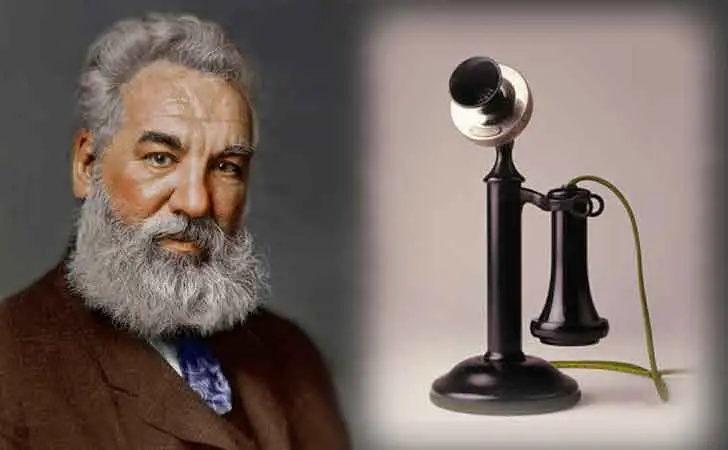| The Victorian period was a time of many new inventions. |
| Earlier discoveries, such as the steam engine, the screw propeller, |
| the power of electricity, and the possibility of sending messages along a wire, were now applied to everyday life. |
| Inventors such as Thomas Edison and Nicholas Tesla explored new methods for harnessing electric power. |
| Some of the greatest discoveries were made by Alexander Graham Bell. |
| Bell was born in Scotland in 1847. |
| Both his father and grandmother taught speech methods and worked with deaf and dumb children. |
| Alexander was also interested in this work, especially as his mother was almost deaf. |
| Alexander’s two brothers died of tuberculosis, and he himself contracted the disease, |
| so his parents decided to leave Scotland for a drier, healthier climate. |
| They moved to Brantford, Ontario, Canada, and lived in a roomy, comfortable house overlooking the Grand River. |
| Today, the Bell Homestead is an historical museum that attracts visitors from all over the world. |
| At that time, Canada did not have a lot of business opportunities, |
| so Alexander found a job teaching speech in Boston, U.S.A. |
| But he returned to Brantford every summer. |
| In Boston, Bell married one of his deaf students. |
| His father-in-law suggested that there were good business opportunities in inventing communication devices. |
| Bell soon developed a method for sending more than one telegraph message at the same time. |
| While working on improving the telegraph, Bell and his assistant, Thomas Watson, |
| found a way to send the human voice over wires. |
| On August 10, 1876, |
| Bell sent the first telephone message over wires strung between Brantford and Paris, Ontario – eight miles away. |
| The telephone caused an international sensation, with government leaders asking to have one. |
| But Bell didn’t stop there. |
| He worked on the recording properties of wax cylinders and other approaches to flat phonograph records. |
| He also developed the photophone, which later led to the development of the motion picture sound track. |
| Bell worked on these inventions at his laboratory in Washington, D.C., |
| but he didn’t like the hot humid summer weather there. |
| So Bell began looking for a new place to spend his summers. |
| He decided to build a summer home in Cape Breton Island, Nova Scotia. |
| The Island reminded Bell of his native Scotland. |
| Now he had space during the summer to do experiments outside. |
| He soon began to experiment with flying machines. |
| Bell designed and tested huge kites, hoping to come up with a frame for a flying machine. |
| Along with some enthusiastic friends, Bell also experimented with airplanes. |
| On February 23, 1909, one of these planes flew through the air for half a mile. |
| This was the first airplane flight in the British Empire. |
| Alexander Graham Bell Museum in Baddeck, Nova Scotia, displays many of these inventions. |
| Bell was also interested in making a faster boat. |
| Since much of a boat stays under water, the water resistance slows the boat down. |
| Bell thought that if you could raise the boat out of the water it would go much faster. |
| Working on Cape Breton Island, Bell and his friends developed the hydrofoil, |
| a boat that would skim the surface of the water at high speeds. |
| Hydrofoils are in use in many places today. |
| Every time people use the telephone, listen to a recording, |
| watch a movie or television, or ride on a hydrofoil, |
| they owe a debt to that great inventor, Alexander Graham Bell. |
More English listening lessons for intermediate level:
Lesson 82: The Great Walls of China





